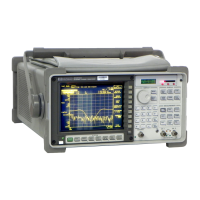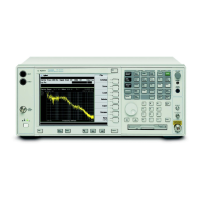What is Curve Fitting?
Curve fitting is a powerful analytical tool that is used to obtain coefficients for
a function that best fits the measured frequency response. With curve fitting,
you start with a frequency response trace and find a linear model that
corresponds to that trace.
Curve fitting is often done in conjunction the analyzer’s math functions. Math
functions let you combine multiple transfer function traces together to simulate
cascaded systems.
Curve fitting derives a linear system model from either measured or
synthesized frequency response data. The pole/zero model is developed by
calculating a weighted least-squares fit of the frequency response data to a
rational polynomial. You can curve fit using frequency response data obtained
with the analyzer’s FFT Analysis mode or Swept Sine mode.
Curve fitting with the Agilent 35670A is done in the s-domain. This means
that the curve fitter finds H(s) models, where s is a complex variable with units
of Hz, not radians. This is of the form:
where:
K is the system Gain
Once a curve fit is complete, the numerator polynomial and denominator
polynomial are factored to obtain poles and zeros. Only real coefficients are
found for the polynomials. Hence, the roots of the polynomials (poles and
zeros) appear as real terms and complex conjugate pairs. The results are
tabulated in the curve-fit table.
Hs K
as a s as as
bs bs bs b s
n
n
m
m
a
f
a
f
=
+++
+++
−
−
(...)
...
1
0
2
1
3
21
1
0
2
1
3
2
1
Agilent 35607A
Operator's Guide Curve Fit Option 1D3
16-3

